Task:
Explore and document a geographical area within your local environment and find ways to express its character. You should start with the following exercises:
• Identify your chosen geographic location. Make sure that it is nearby and accessible. Specify the parameters of this place on a map.
• Investigate the location on foot and document your explorations using a variety of media such as notes, drawings, photographs, audio recordings and video.
• Be prepared, plan and visit several times. Consider stopping by at different times to reflect on how the place changes throughout the day.
Create a message in response to what makes this particular area unique. The format forthis outcome is entirely up to you. It might be a piece of information design, a short film, a booklet for visitors or a piece of advertising.
“Things that people already know don’t excite them. And yet people have great zeal for making the world known…To know something is to cause to our sensory perceptions the fertilization of an inspirational, pounding emotion. However, whether it’s because the provision of information has surpassed critical mass, without us realizing it, knowledge has ceased functioning as an intermediary that facilitates thought, and multitudes of those pieces of information pile up all around us, their state one in which it’s not clear whether they are dead or alive…If so, wouldn’t it be a good thing to unknow the world?” (Kenya Hara, 2015).
Initially, I was not entirely sure exactly how I would approach the third brief. However, the above extract from Kenya Hara’s book Ex-formation (2015), really resonated with me.
My home-town, Carrickfergus – one of the oldest in Ireland – has a very long, very rich cultural heritage which stretches back over 800 years. Before you even enter the town, one of the first things you will notice about it is it’s Norman Castle – one of the best preserved in the UK. Most people in Carrickfergus are both familiar with and proud of the town’s history. I was not sure what more I could offer in terms of the town’s history. It isn’t a town known for an industry, shopping, leisure facilities or nature. If I was going to find something unique to highlight about my town, then I was going to have think creatively.
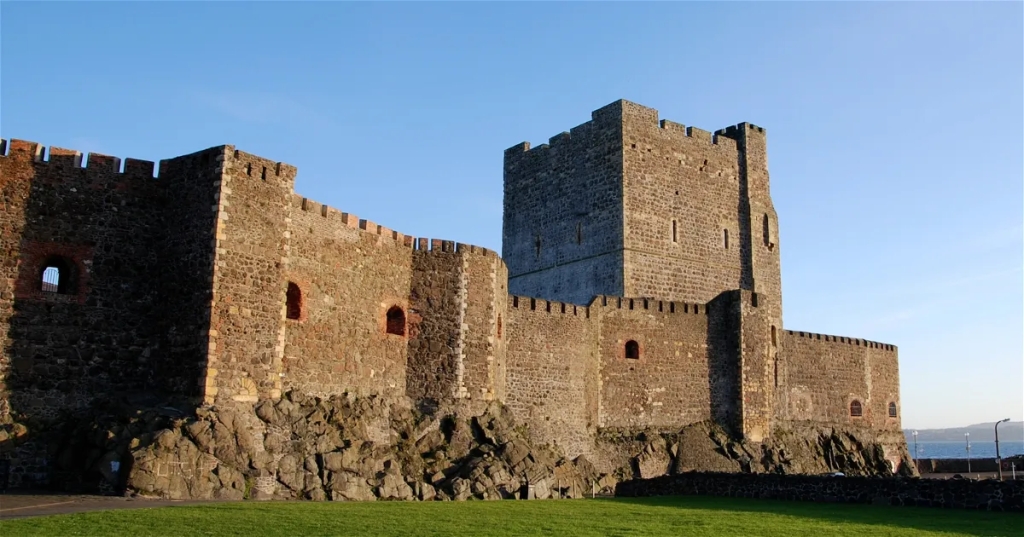
I felt that ignoring the town’s cultural heritage would be doing it a disservice. I wanted to find a way that I could acknowledge its rich history and traditions, while adding my own unique, personal perspective to it. I was keen to tell a story about some aspect of the community and its surrounding environment through a mix of photographs and narrative.
The hills above Carrickfergus offer an excellent vantage point from which to take photographs of the town. However, I was not sure that this perspective would lend itself well to telling a story. I really wanted something which felt more focused and personal. Purely by coincidence, my mum was chatting about an old historical site close to where we live. It consisted of the ruins of an old house (Kilroot House) and an adjoining graveyard. I was quite shocked that this site which was obviously of historical significance to the town, had existed to close to our home and I had been unaware of it. It led me to reflect on our week 6 lecture which talked about noticing the unnoticed. I visited the location the following day and felt a real connection with it. I began thinking about different ways in which I could use it in my brief.

As I thought about this idea, I started to gather some pictures which I thought would work for this type of project and began to make a moodboard. I also began to think about other similar locations in both the town and surrounding area which would allow me to explore my ideas further.
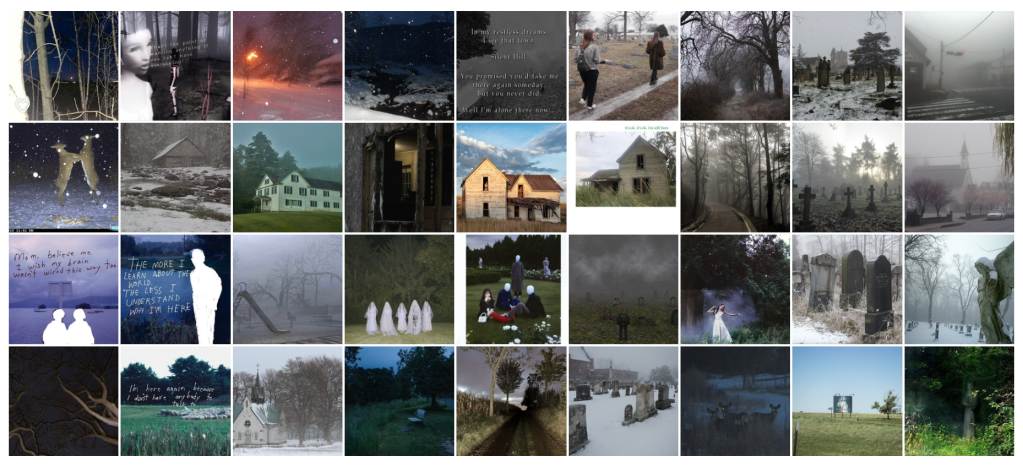
I also gathered inspiration from video games I had played which had a similar kind of feeling.
Images 1 & 2: Silent Hill 2, Images 3 & 4: The Path
For some time, I have admired the work of photographer Geloy Concepcion – in particular his project, THINGS YOU WANTED TO SAY BUT NEVER DID.
Moving from the Philippines to the USA in 2017, Concepcion found himself unable to work due to the lengthy immigration process. Frustrated, he considered giving up photography. However, as he looked through old, unused photographs, he remembered a question he had asked on Instagram a few years previously – “what are the things you wanted to say but you never did?”. He went back to find the answers people had posted at the time and inspired by his fascination with graffiti, he decided to post the anonymous answers to these questions, over anonymous photographs.
Inspired by the positive reaction to this, he extended the project by asking people to submit more anonymous comments, which he then paired with his photos.
Explaining his use of anonymous comments, Geloy (qtd by Nonino, 2021) states, “I think having anonymity makes people more open and honest about themselves…not knowing the author makes the project more fluid and inclusive”. This way, the project can be for no one or everyone.
Still very much in the development phase, I thought about what message/narrative I wanted to convey and how I might combine photographs with words to achieve that. I felt a little bit conflicted about this. I really liked the way Geloy Concepcion had used a combination of photos and anonymous comments to create messages that could belong to anyone. I thought this was an idea which was worth considering further.
While I wanted to honour the memory of people who had been buried in very old, often forgotten graves and give them some kind of voice, I wanted to do so with dignity and respect. I was conscious of not intruding on the privacy of those buried in the graves, given they could not consent to this process. Through my final piece, I wanted to encourage others to recognise and remember the legacy of those who were once and in many ways still are, part of our town’s community..
As I moved on to the next stage of the design process, I was ready to make some definitive choices about the direction my brief would go.
Format
Initially, I had considered making a display from a series of photos. However, because I wanted to tell a story that included photographs and text, I decided it would be more interesting for viewers to present the piece in a photobook format.
Story/Narrrative
I still was not completely certain about the direction of the story and during my tutorial with Paul, he had told me to become be overly anxious about that at this point.
I knew however, that I wanted the narrative to be in the first person, giving a voice to the abandoned properties or people inhabiting the old graves.
I did not want to limit the photobook to one location only and fortunately, Carrickfergus and the surrounding area has quite a few old cemeteries and church yards, as well as historical ruins and derelict properties. I identified 4 separate locations in which to take photographs. These locations are all within half an hour’s drive of Carrickfergus.
- Saint Nicholas Church and Churchyard
- Kilroot House and Graveyard
- Islandmagee Old Church Graveyard
- Cairndhu House

Context for Locations
Kilroot House and Graveyard
Kilroot House and its adjoining graveyard are situated on the remains of a bawn, located within an earlier ecclesiastical site of Kilroot, dating back to medieval times (MacDonald, 2003). Although just a ruin now, the house was originally constructed in the 18th century, remaining occupied until at least the beginning of the 19th Century. The house and cemetery stand on the site of the ruins of a medieval church which was prevously situated there. It is believed that Gulliver’s Travels author, Jonathan Swift served as a prebend in the church in the late 1600s.
The gravestones in the cemetery are dated from the 18th, 19th and 20th centuries. However, archaeological excavations of the site by Queen’s University Belfast, suggests that burial had taken place on the site as far back as early medieval times (MacDonald, 2003). Again, it appears the cemetery originally extended beyond the limit of its current boundary. Experts suggest that this may would be in line with the fact that before the 16th century, burial stones were not commonly used in Ireland.
St Nicholas Church and Churchyard
St Nicholas Church and graveyard lies at the very heart of Carrickfergus. Originally constructed in 1182, it was reconstructed in 1614 and restored in 1907. One of its most renowned features is its Jacobean vault – The Chichester Vault – which was created by Italian craftsmen in 1625.
A walled churchyard surrounds the church and contains both ancient and modern graves. An archaeological dig by Queen’s University Belfast in 2010/11 suggests the cemetery originally extended far beyond today’s walls (Ó Baoill and Murray, 2011).
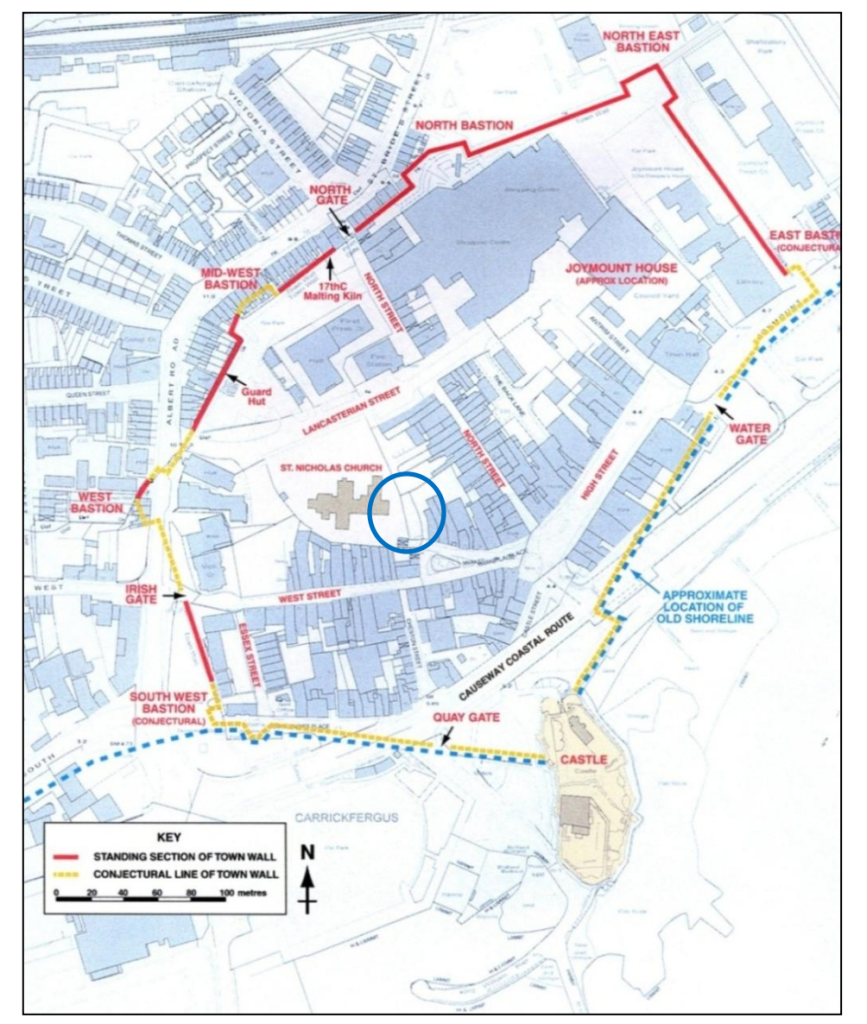
Old Islandmagee Church Graveyard
Unfortunately, there is very little information available about this graveyard. Indeed, until recent times it was very overgrown, with many people not knowing of its existence.
Cairndhu House
I made a last minute decision to include Cairndhu House as one of my locations. Overlooking the sea, it was built in 1875 as a summer residence for the Clarke family. When their daughter married Sir Thomas Dixon, the couple took over ownership of the house, spending 30 very happy years there. In 1947, they donated the house to the Northern Ireland Hospitals Authority, to be used as a convalescent home – a purpose it served for almost 40 years. Since its closure, the once beautiful house has remained derelict and abandoned falling into disrepair, gaining a reputation of being most haunted house in Northern Ireland.
I felt the inclusion of the house as a location would add an extra layer to the theme I wanted to explore in my photobook. I wanted to give this property a voice of its own because it deterioration is heartbreaking.
Photographing the Locations
Kilroot House and Graveyard
I visited Kilroot House and Graveyard on a typically drizzly, Northern Irish, November afternoon. I had deliberately decided to go between 4 and 5 pm, approaching sunset. The site is in quite a remote location outside the main town and I was the only person there. There are signs warning visitors not to enter the site of the ruins, due to their poor condition. Although there is a gate allowing access to the graveyard, it is very difficult to open. Therefore, I accessed it using the stile beside it. There was a lone pheasant wandering around the site while I was there.
Saint Nicholas Churchyard
As this was the most accessible of my locations, I decided to visit later in the evening when it was already dark. Again, typically of Northern Irish weather, it was raining intermittently. Although this is a commonly used shortcut from one part of town to the other, I did not encounter anyone else in the churchyard while I was there. The church itself was open but I did not go inside.
Old Islandmagee Church Graveyard
Although this graveyard is about 15 minutes outside of Carrickfergus by car, it is an area I am familiar with. Until recently, the graveyard was overgrown and hidden from public view. It is accessed by an old iron gate but like the old graveyard in Kilroot, it can also be accessed by a stonework stile. I visited this site on a clear, dry, cold afternoon. The sun set while I was there. Again, I was the only person at the site for the duration of my visit. Some parts of the site remain quite overgrown with ivy, with some graves appearing to be inside an inner courtyard where it appears a building once stood.
Cairndhu House
This site is about 30 minutes away from Carrickfergus on the Antrim Coast Road – an area popular with tourists. I wanted to include this site in my photobook because the dichotomy between decaying state and its still very beautiful, gothic style architecture, really fit with the aesthetic of the photobook I want to create. Permission to enter the house must be sought from its owner, however there are no restrictions on visiting the outside of the property. All my photos were taken from outside. I visited the site in the late afternoon and there was one other person looking around the site at the time. I actually felt a real sense of empathy with the house. It was upsetting to find it in such a state of disrepair. Someone had spray painted “they hear you” on the inside walls of the house and in some ways, it really spoke to me.
Putting my Design Together
After taking all the photographs, I went through them carefully, choosing those which were most suited to the aesthetic I wanted to achieve in the photobook. Having done so, I used Adobe Lightroom to edit them to ensure they consistently matched the feeling I wanted to convey. Once I was satisfied with the editing, I began to think about the layout of the book itself. I chose one image to use as a wrap-around cover and another to use as a contents page. For each location, I allocated 8 single pages.

The Narrative
I wanted the narrative to tell a personal story of both places and people in our community that are no longer noticed; remembering that at one time those people and those places (once filled with people) had a very real purpose and role in a community we are all part of.
I wanted to give those who might feel abandoned a voice.
I also felt quite strongly that I wanted to give the house a voice, so chose to write about it in the first person creating the idea that the book was some kind of personal journal.
To add to the personal feel of the narrative, I decided to use hand-written text throughout.
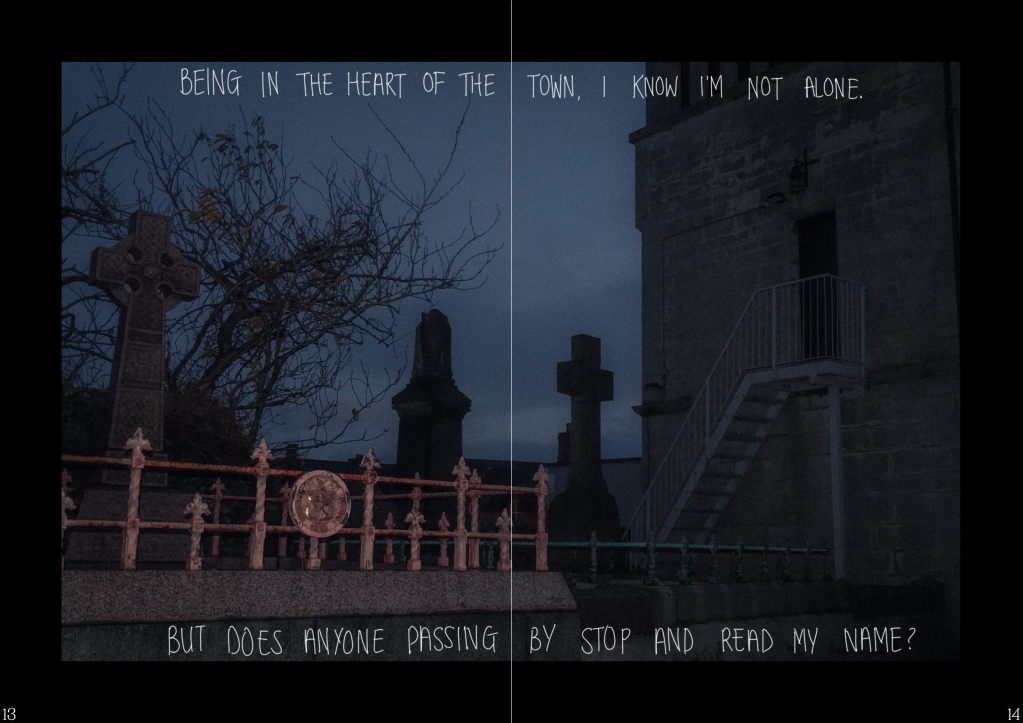
Finally, as music plays a significant role in my creative process, acting as both an influence and inspiration, I decided to include a playlist on the final page of the book. It was made up of songs I had listened to as I visited the locations, as well as during the editing and design process. I also thought it would act as a moving soundtrack to anyone viewing the book.
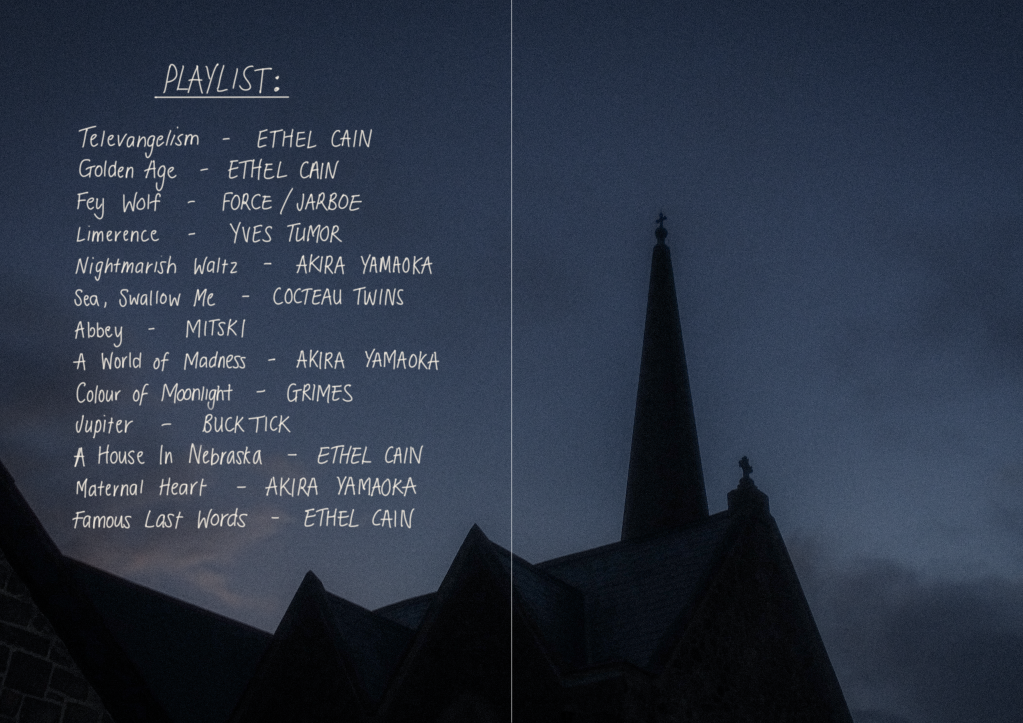
Sources:
Belmont. T. (2010). Cairndhu House. Available at: http://lordbelmontinnorthernireland.blogspot.com/2014/05/cairndhu-house.html. (Accessed on: 5 December 2023).
Carrickfergus History. (2016). Ancient and Medieval Kilroot. Available at: https://carrickfergushistory.co.uk/ancient-and-medieval-kilroot//. (Accessed at: 5 December 2023).
Ó Baoill, Ruairi and Murray, Emily. (2011). Excavations in 2010-11 at Market Place, Carrickfergus, Co. Antrim, adjacent to St. Nicholas’ Church. Available at: https://www.qub.ac.uk/sites/communityarchaeology/PDFFileStore/Filetoupload,275117,en.pdf. (Accessed on: 5 December 2023).
Purdy, Finn. (2023). Cairndhu House: The most haunted house in Northern Ireland?. Available at: https://www.bbc.co.uk/news/uk-northern-ireland-67263847. (Accessed on: 5 December 2023).
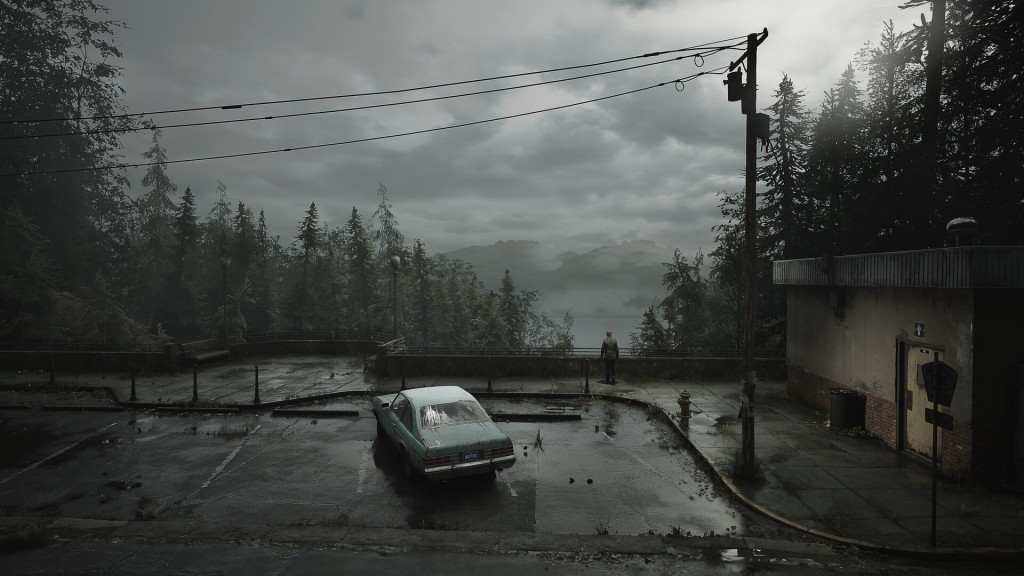
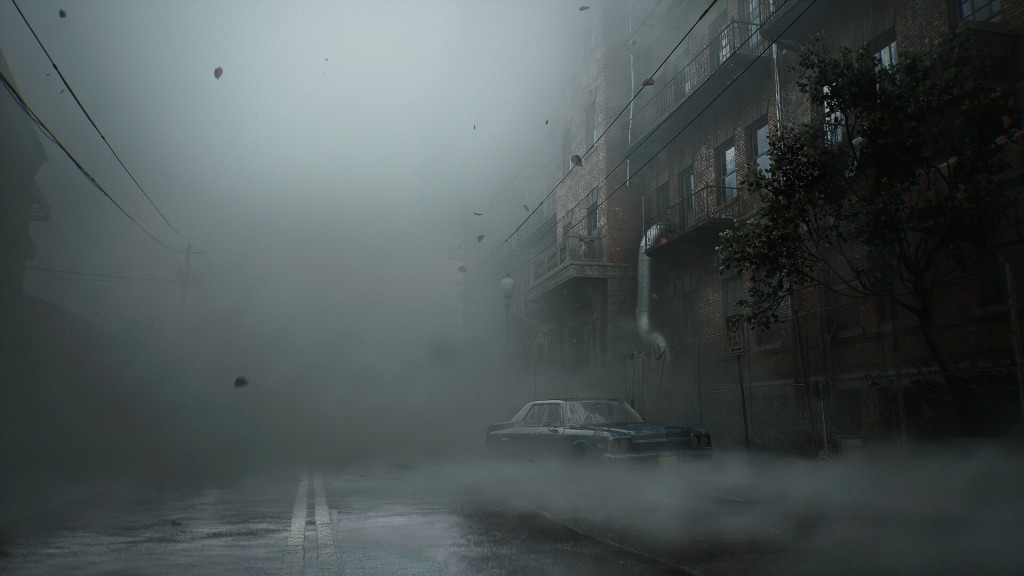


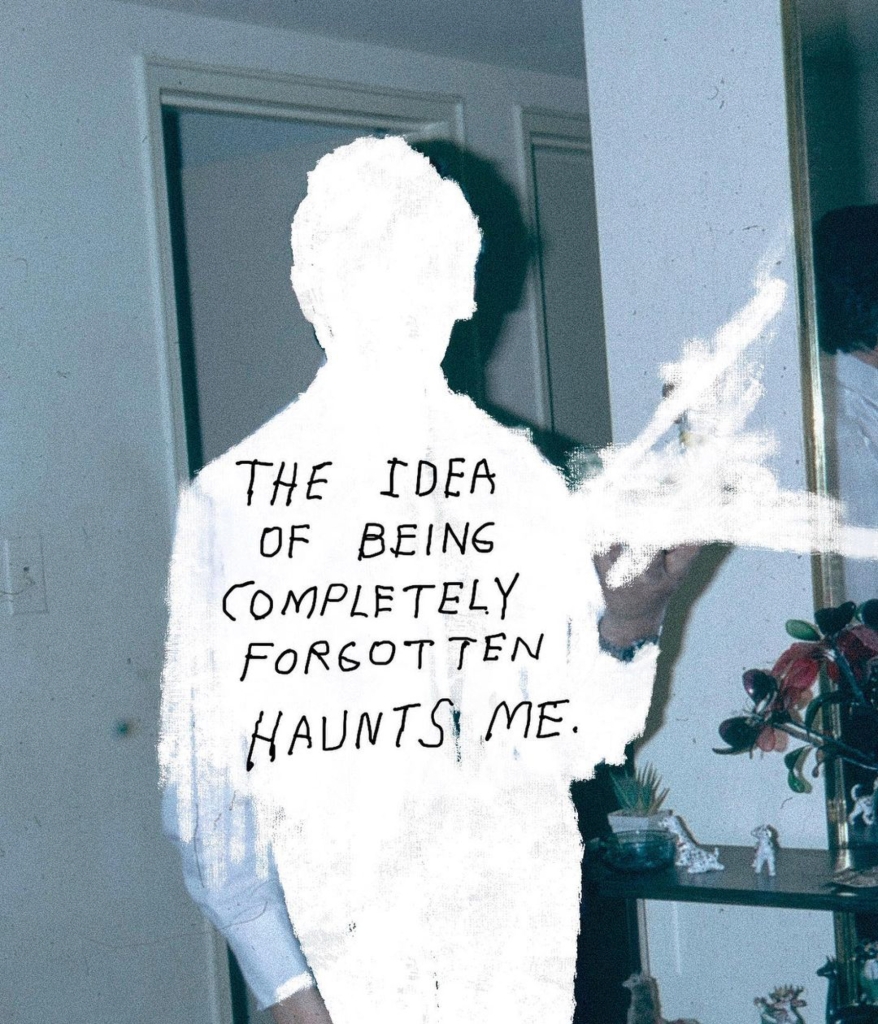


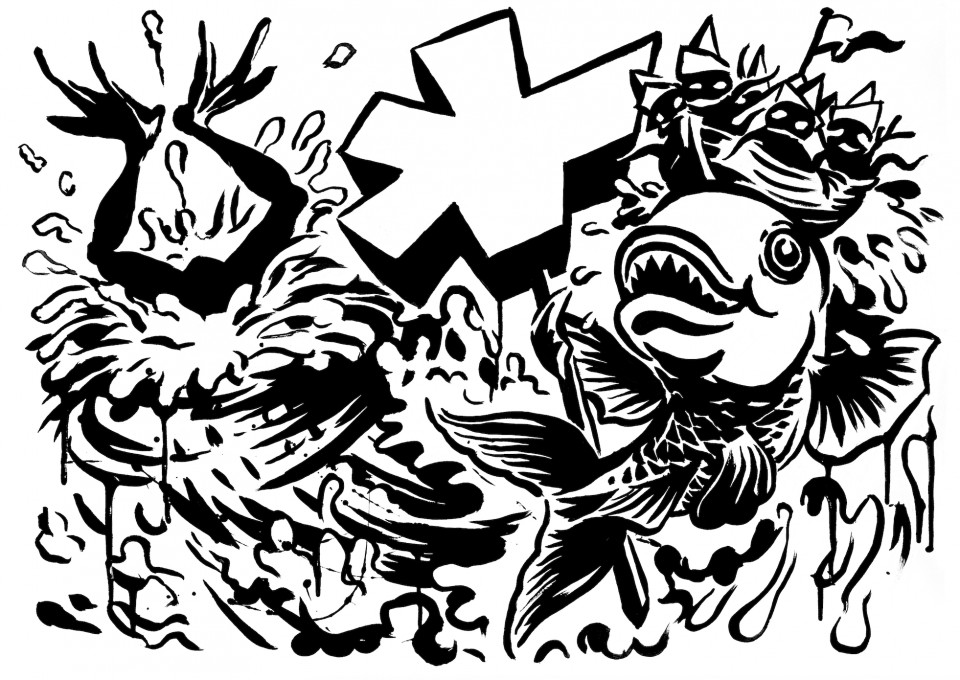

Leave a comment